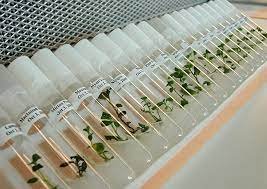Science and Technology
Union
Minister for Agriculture and Farmers Welfare, Shri Narendra Singh Tomar
inaugurated the world’s second-largest refurbished progressive National sequence Bank at the National Bureau of Plant Genetic
Resources (NBPGR), Pusa, New Delhi.
·
Gene banks area unit a sort of
bio repository that preserves genetic material. sequence banks exist to conserve the genetic diversity of untamed and domesticated
organisms that humans depend upon for
food, fiber, drugs &
energy
·
Types of sequence Banks area
unit Seed Bank, Tissue Bank, Cryo Bank, spore Bank, Field sequence Bank, Sperm Bank, Ova
Bank sequence bank for
plants is completed by
in vitro storage, temperature
reduction cuttings from the plant, or stocking the seeds
(e.g. in an exceedingly seed
bank). sequence bank
for animals is completed by
the temperature reduction of gamete and eggs in zoological
freezers till additional want.
·
Gene bank for corals is completed by fragments area unit taken and hold on in water tanks underneath controlled conditions
Maintaining material in sequence banks is usually termed ‘ex situ
conservation’ that is outlined as ‘the conservation
of parts of diverseness outside their natural
habitats’
·
The National Gene Bank established in
the year 1996 to preserve the seeds of Plant Genetic Resources (PGR) for future
generations, has the capacity to preserve about one million germplasm in the
form of seeds.
·
Applications Maintain the sequencetic integrity of its
accessions create the
accessions simply obtainable to users of
germplasm offer the staple for plant breeding and
basic scientific research –
Accessions of crop wild relatives ar notably valuable as sources of
gene suppliers offer germplasm for restoration
of lost crops when natural
or man- created catastrophes
To conserve the Plant Genetic Resources (PGR) for future generations within the style of seeds, genomic
resources, pollen etc.


Comments